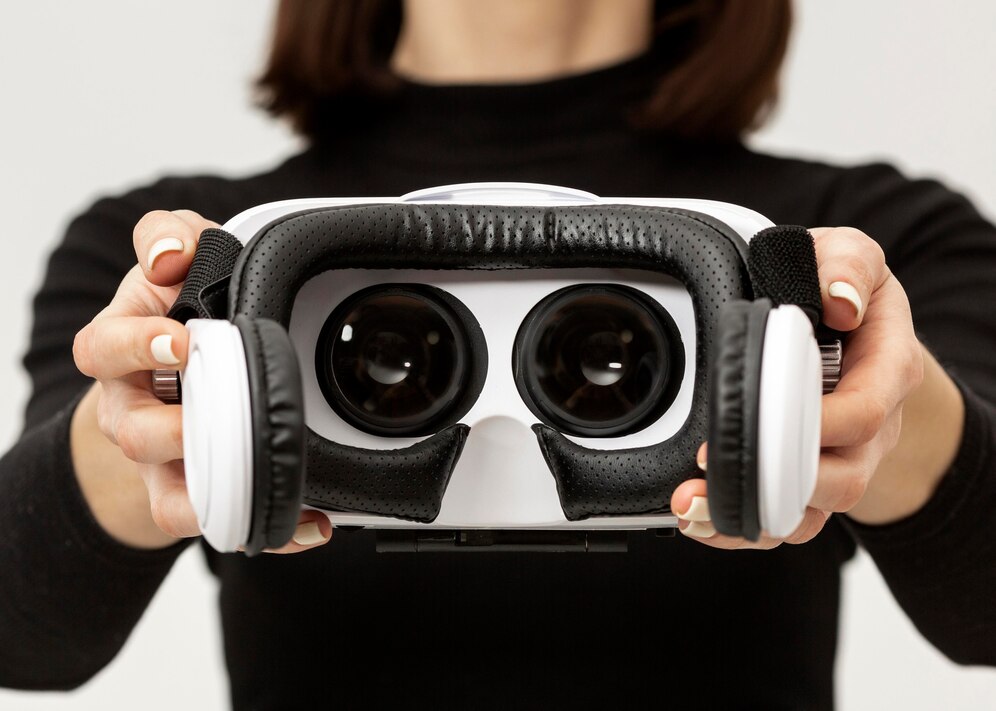The arrival of Apple Vision Pro promises to revolutionize how we interact with the digital world. This mixed reality (MR) headset boasts advanced features like spatial computing, high-resolution displays, and powerful sensors, blurring the lines between physical and virtual spaces. For app developers, AVP presents a treasure trove of possibilities, paving the way for groundbreaking experiences across various industries.
This blog delves into the exciting realm of Apple Vision Pro app development. We'll explore the development process, uncover potential app ideas, and examine how AVP can transform various sectors.
The AVP Development Process
Building an AVP app requires a unique approach compared to traditional mobile app development. Here's a breakdown of the key stages:
- Conceptualization: The first step involves brainstorming app ideas that leverage AVP's strengths. Consider the target audience, desired functionality, and the value proposition the app offers.
- Prototyping: Develop a low-fidelity prototype to test core functionalities and user interactions within the MR environment. This allows for early feedback and iteration before diving into complex development.
- 3D Design & Development: AVP thrives on high-quality 3D assets. This stage involves creating 3D models, environments, and user interfaces (UIs) optimized for the headset's display and spatial tracking capabilities.
- Integration with Apple's ARKit and SpatialOS: Utilize Apple's ARKit framework to integrate real-world elements with virtual content. SpatialOS, a platform for building distributed applications, can be leveraged for multi-user experiences within the AVP environment.
- Testing & Refinement: Rigorous testing is crucial to ensure seamless performance, intuitive user interaction, and minimal motion sickness. User feedback plays a vital role in refining the app's design and functionality.
App Ideas That Unleash AVP's Potential
The possibilities with AVP are vast. Here are some captivating app ideas that showcase the power of this technology:
- Revolutionizing Education: Imagine a virtual classroom where students can dissect 3D models of the human body, explore historical landmarks, or conduct virtual experiments. AVP can transform complex concepts into engaging, interactive experiences.
- Transforming Retail: Picture virtually trying on clothes in your living room, visualizing furniture placement before purchase, or exploring product features in an interactive 3D environment. AVP can create personalized and immersive shopping experiences.
- Boosting Healthcare: Medical simulations can become hyper-realistic, allowing doctors and nurses to train for complex procedures in a safe, controlled environment. AR overlays can assist surgeons with real-time patient data during operations.
- Enhancing Design & Architecture: Architects can collaborate with clients in a virtual space, visualizing building designs in real-world scale. Interior designers can create immersive mockups, allowing clients to experience their dream spaces before construction begins.
- Redefining Travel & Tourism: Imagine exploring historical sites with interactive overlays that bring history to life. AVP can guide tourists through unfamiliar destinations, showcasing landmarks, and hidden gems in an augmented reality experience.
- Supercharging Productivity & Collaboration: Imagine holding virtual meetings where team members interact with 3D presentations in a shared space. AVP can revolutionize remote collaboration, fostering a more immersive and engaging work environment.
FAQs:
- What programming languages are used for AVP development?
Developers can leverage Swift, Apple's preferred language for iOS development, to create AVP apps.
- What are the development costs associated with AVP apps?
Development costs can vary depending on app complexity, development team size, and desired features. AVP's cutting-edge nature might incur higher costs compared to traditional mobile app development.
- Do I need a Mac computer to develop AVP apps?
Yes, AVP development requires a Mac computer with the latest macOS version and Xcode, Apple's integrated development environment.
- What are the best practices for designing AVP apps?
Focus on intuitive user interactions, prioritize comfort to minimize motion sickness, and leverage spatial audio to create a truly immersive experience.
Conclusion:
The dawn of AVP marks a paradigm shift in how we interact with technology. App developers have a unique opportunity to shape the future of this innovative platform. By harnessing AVP's capabilities, developers can create groundbreaking applications that enhance learning, empower professionals, and redefine entertainment. As AVP technology matures and becomes more accessible, we can expect a wave of innovative apps that transform the way we live, work, and learn.





Comments